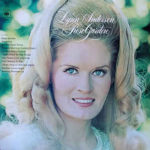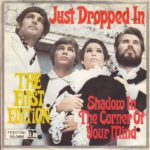Note: I selected some songs to accompany this article. Hopefully these musical offerings will help you see ideas presented in this article from a different perspective. Should you find the article too “out there,” your time will not be completely wasted because you can still enjoy the music. This article is another in a series submitted to the Warm Springs Garden Club Fall Newsletter (September 2019).
’Tis the season when Fall gardening “to-do” lists appear in gardening magazines and newsletters. Do experts who produce these to-do lists have the temerity to think they know what’s in my garden’s best interest? By following their advice, am I making my garden more like the expert’s? Certainly by following an expert’s advice, I’m moving farther away from what I may co-create with nature, a truly unique garden emerging from my interaction with nature, as different from the expert’s garden as I am from the expert.
I’m not a gardening expert, nor do I believe I know what’s in your garden’s best interest. However, I have seen enough frustration among gardeners attempting to follow these to-do lists that I’m inspired to offer my more relaxed list, a list for the rest of us, so we can get over the guilt of worrying our garden may not live up to another’s expectations. Let’s enjoy ourselves and our gardens.
I better be clear on how I use two common words: garden and gardening. I have a generous definition of the term “garden” that includes all the bits and pieces making up a residential landscape; this includes everything from foundation plantings around your home, the lawn, trees and various flower beds. I prefer the term gardening over landscaping because I believe that you’ll get closer to manifesting your truly unique “landscape” by connecting with your land for guidance rather than imprinting a generic design onto your land. In other words, I feel it’s more natural to develop your landscape from the inside (through gardening) rather than the outside (landscaping).
I understand why we are attracted to advice from gardening experts. Just as we tend to seek and follow advice from respected elders as we move between stages of our life, there’s comfort in following the rhythmicity of activities in an otherwise unknown future ruled by the indifferent hand of fate. “To everything there is a season. A time to be born, a time to die. A time to plant, a time to reap. A time to kill, a time to heal. A time to laugh, a time to weep.”

https://www.youtube.com/watch?v=W4ga_M5Zdn4
Before considering anyone’s advice, I invite you to first step back to gain a wider perspective on gardening. Go into your garden and ask those big questions about why you garden. What if the ultimate reason the garden exists is to connect you to nature and to support your physical, mental and spiritual health? How awesome is that! Perhaps it’s because it’s so convenient, having this health portal outside our backdoor, that we take it for granted and forget its potential. So before considering any expert’s advice, go into your garden, sit quietly and meditate. After calming your mind, consider John Muir’s perspective on interconnectivity, “When we try to pick out anything by itself, we find it hitched to everything else in the Universe.” Hold that thought as you feel the connection between you and your garden. Perhaps with this new perspective you’ll see that things in your garden aren’t as bad as you initially thought. Maybe everything in your garden is operating as it should be, according to nature’s way. And that although we get wrapped up with drama induced by humans figuring out how to live together on this planet, sitting in our garden we can still think to ourselves, “What a wonderful world.”

I can not solve your problems; especially if your problems arise from your garden not fulfilling your expectations. The purpose of this article is to help you, the gardener, find balance in a new relationship with your garden. The garden you observe out your kitchen window is a manifestation of the invisible workings of natural forces – nature “naturing.” Since you are a part of this natural world you can perceive the physical realm with your physical senses. But perhaps it’s also possible to perceive things in other realms with your imagination. By closely observing nature operate in my garden, with both my physical senses and imagination, I’ve come to realize there are impulses in nature with the need to restore balance as the primary impulse. I’ve learned to accept this dynamic homeostasis inherent in nature and adjust my intentions with nature’s allowance. In this co-creative strategy with nature I’m unable to predict the appearance of my garden – an outcome that’s unnerving to some gardeners clinging to control. To gardeners limiting themselves to interacting with nature only on a physical basis, I can only shake my head and smile as these gardeners repeatedly recount years and years of frustration with their gardens not meeting expectations. I imagine nature saying, “I beg your pardon. I never promised you a rose garden.”

https://www.youtube.com/watch?v=2-eclUz-RYI
The approach of autumn marks a significant transition in the garden. I’m in agreement with experts encouraging us to let our gardens rest over the winter, but disagree with recommendations to make the garden appear clean and tidy like one’s living room. I’m speaking of the recommendations to cut and remove all traces of above ground shoot systems from annuals and herbaceous perennials, leaving extensive bare areas of soil. This horticulture vanity results in the loss of important habitat for the biodiversity necessary for a sustainable garden. With the rare exception of removing specific plant parts that may be harboring a specific disease, these draconian sterilization measures have more to do with aesthetics than garden health. Do you really want an over-wintering landscape, bare, sterile, manicured and under control? Does it have to be about you and your aesthetic threshold? I can picture a praying mantis watching in disbelief as she watches her over-wintering egg mass swept away by an overzealous gardener. If you listen carefully, in a faint little voice you’ll hear that praying mantis singing – “You’re so vain. I bet you think this song is about you.”

“
I’m inviting you to consider your actions and expectations in the broader context of nature. Personally, I find gardening more enjoyable now that I have lessened my control over nature and greatly reduced expectations. With this freedom and openness, “work” is replaced with a form of moving meditation and discriminating vision is replaced with a keen vision receptive to little surprises appearing daily. I feel like a painter, partnering with an invisible entity, to co-create surprising outcomes. Outcomes that to the casual observer may appear a bit wild and unkept, perhaps even resulting in a call to a community’s landscape advisory board as a derelict landscape. However, I feel I’m able to see the wisdom of nature in the formation of healthy soil and abundant biodiversity above and below ground. Having relinquished expectations and control over the garden, I can now relax and enjoy the present moment with all of its surprising outcomes. In other words, “Que sera, sera. Whatever will be, will be. The future’s not ours to see. Que sera, sera.”

https://www.youtube.com/watch?v=3FKA-3uRdQY
“
So here’s my to-do list to assist the gardener transition into a new awareness and the garden transition into autumn.
Observe and appreciate
Preserve wild areas
Value leaves
Plant bulbs
Commit to a chemical-free landscape
Observe and Appreciate
Doctors, on average, only listen to their patients explain their reason for a visit for 11 seconds before interrupting. As the primary health care provider for your garden, surely you can set aside the time necessary to fully assess the condition of your garden. When was the last time you were truly present in your garden? I’m talking about sitting quietly in different areas of your garden as if you have all the time in the world and can simply be present. In these special moments, I believe you can receive insight from your garden. Connecting with an individual plant may reveal its connection with the soil and other plants.
A technique I use to connect with a plant is to observe it without my thinking mind. Instead of labeling and categorizing my observations, I simply gaze at the plant until something draws me in, like a symmetrical pattern. I continue focusing on that specific attribute until the plant begins to reveal its interconnections. I do believe, through that plant ambassador, I can get a glimpse of nature’s impulse for me and that area of the garden. I believe you’ll find that performing deep observations can be very revealing and open up avenues of not only garden-awareness, but self-awareness. In short, you are dropping-in to see what condition your condition is in.
Preserve Wild Areas
It’s never too late to stop mowing. Leaving “wild” areas provides important habitat for the biodiversity that runs your landscape’s ecosystem. If you hang up Bluebird boxes you’re providing a place for Bluebirds to nest. You’ll improve your chances of attracting and maintaining populations of Bluebirds if you provide them with something to eat. Allowing portions of your lawn to grow naturally provides habitat for the insects that serve as an important food source for the Bluebirds.
Certainly you can transplant in some native grasses, coneflowers, and other plants you desire, but consider stepping back to let nature take the lead in forming new meadows-to-be. Anne and I are treated to a wonderful display of Lupines, Indian Blanket Flowers, Coneflowers, Queen Anne’s Lace, Chicory, Coreopsis, and an arousing encore of Goldenrod to close the season. Other than popping out a few woody seedlings and woody invasives, the natural areas only require one mowing which we schedule in late March or early April so this habitat may support overwintering organisms. So if you find yourself in times of trouble, keeping up with the concept of “control” over your lawn and landscape, relinquish control for awhile and let nature take over. “Let it be.”

Value Leaves
Fallen foliage can help restore the balance of soil health in many ways. Leaving leaves under the trees is in the trees’ best interest. Research confirms that the annual shedding of leaves, twigs, and other discarded aerial structures (“litterfall”) under trees is necessary to create the optimal soil conditions for that tree even though it may be growing in an otherwise foreign environment (pasture). The decomposing leaves maintain optimal levels of organic matter, pH, support of soil organisms and much more. It can take years for the optimal conditions to be achieved, but only moments (typically one guy and leaf blower) to destroy.
Litterfall also provides important habitat for overwintering organisms. Rake up several small piles in out-of-the-way locations and simply leave them. These piles serve as habitat for a variety of organisms, especially for amphibians and reptiles [two groups of animals believed to be endangered in urban areas primarily because of habitat destruction (removal of litterfall)].
Consider transforming your leaves into compost. Plan ahead for where you’ll collect leaves and how and where you’ll store the leaves. I recommend chopping the leaves with a lawn mower and then storing them in a large pile. In early spring, I mix these leaves with nitrogen-rich grass collected during the first two mowings to produce some wonderful compost. If I do nothing, the pile of chopped leaves gradually shrinks in size and transforms into a wonderful rich mulch-like compost all on its own by early summer.
When the leaves begin turning colors in the fall I’m a little sad that summer is ending and the stillness of autumn and winter is approaching. Then I realize the futility of clinging to a season. Should my wish be granted and summer remained forever, we would all be miserable and miss the other seasons. Still, when the temperature drops and the chlorophyll drains from the garden, I do regret the passing of sunny summer and dream of visiting a warmer climate, even if just for short while. After all, it can be rather bleak when, “All the leaves are brown. And the sky is gray.”

https://www.youtube.com/watch?v=qhZULM69DIw
Plant Bulbs
Planting bulbs in the fall connects me to the spring. When nestling a bulb in the earth I can’t help but smile, knowing that although this wee plant will only produce a small and temporal colorful display, taken together, all of the bulbs produce a slow-moving fireworks display worthy of any Fourth of July celebration. Long after Anne and I pass, this silent spring symphony will continue to emerge to announce the waning of winter and the emergence of spring for another lucky couple of gardeners.
Although daffodils and tulips are our favorites, we purchase a variety of bulbs (Anne prefers ordering from Brecks, http://www.brecks.com) every fall. A gardening expert would accuse us of selecting our bulb planting sites in a reckless manner. Such an accusation would be fairly accurate. But in the spring, it’s a delight to see where bulbs emerge. Most of our planting occurs in November. We wait for rain to soften the ground and then load up our little wagon and prance off to areas that seem to be calling out for some springtime joy. It makes no difference to us that we forget where we have planted bulbs in the past. We make our holes with a soil auger drill bit attached to a hefty drill. After doing a count of the viable bulbs, I’ll make the requisite number of holes and Anne follows behind putting the wee bulbs into their new homes.
In the spring we invite friends for tea and a stroll through the grounds to celebrate these harbingers of spring. And on a not-so-cold moonlit evening, what could be more romantic than inviting your significant other for a stroll through the maze of colors erupting from the land. Arm-in-arm, tip-toeing through the tulips.

”https://www.youtube.com/watch?v=Qd7X1K1UJ74
Commit to a chemical-free landscape
Many gardening experts suggest a fall fertilization of perennials and woody plants. I disagree. Fertilizing trees, especially with nitrogen, when they don’t need it (for the record, we still do not know the nutrient needs of trees) results in problems with increase pest and disease damage, increased susceptibility to drought and the loss of important root-microbe partnerships. In fact, be extremely cautious with any fertilization and pesticide application. We are only just beginning to understand subtle and extensive relationships between organisms in landscapes. Simplistic solutions to perceived problems may sound good but often upset an unseen delicate balance for a considerable amount of time – resulting in more perceived problems requiring more chemical solutions. I’m beginning to think the reason landscape fertilization and pesticide corporations have invested so heavily into land-grant universities is that they have found it to be a successful marketing campaign. I hope that university life science departments can once again return to researching life relationships and help ween homeowners from harmful chemical addictions in our gardens.
One spray kills the brown bugs, and one spray kills the slugs.
And the fertilizer that they sold you, is the garden’s new drug….

https://www.youtube.com/watch?v=EUY2kJE0AZE
Final Thought
It is my hope that this fall you’ll approach your garden more mindfully. Question everything. Make deep observations. Check those impulses nagging at you to do what you’ve always done. Do those repetitive tasks serve your health and your garden’s health? If gardening is anything, it’s experimentation. Conjure up that magic you felt when as a child you first started observing and interacting with nature. I believe your garden contains an immense intelligence and layers upon layers of interconnectivity. We are all part of this planet’s web of life. Nature is busy naturing behind the scenes to provide your garden with lots of interesting autumn surprises. Consider this change of seasons an invitation: nature is inviting you to take another look at your garden. Now, shut off this electronic device and go outside!

